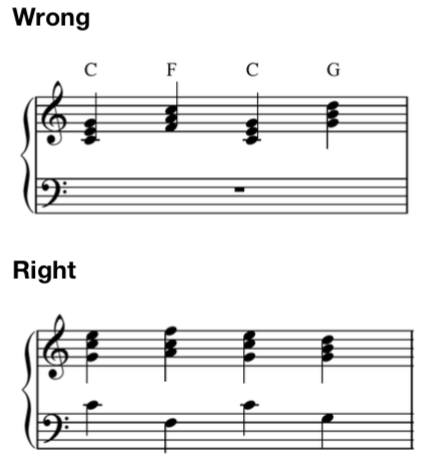I think, reading all of this, I'm changing my mind. It seems to me that something not so far from what we have now, a set of what @RTylerMclaughlin calls 'user-friendly chord synonyms that symbolize collections of notes' is good enough for Tidal.
I'm not sure that Tidal needs to be able to work out voice leading and idiomatic voicings. I'm prepared to let go of the fact that 'c13' is going to have seven notes in it, and that simple triads are going to jump around in root position. If I want to do something better then I can think about it, and write out the needed pitches in the right octave. Which is already possible:
d1 $ slow 2 $ note "[g2, f, a, c, f5] [g2, f, af, b, e5] [c2, e, a, b, g5]@2" # s "superpiano"
(Aside: there is a similar problem with using 'dorian' or 'pelog' to refer to mere collections of notes. The latter in particular is a travesty of Javanese musical thinking.)
Given that we can already notate any set of pitches that we want, I'm not sure that the Forte notation adds much useful. Forgive my ignorance, but isn't that just about pitch class, ignoring octave? If so, pretty useless for writing conventional harmony. Still… might be fun to have I guess? I quite like the cryptic quality.
Thanks for posting the Tymoczko: I didn't know this. And, I can't follow any of it! I take it that, in principle, there may exist algorithms that would automagically give me nicely laid out chords that move smoothly. I'd love to have access to something like that to play with, not just in Tidal, but in, say, SuperCollider or MuseScore: a separate tool, perhaps? (Probably exists already: iReal Pro manages to busk chord voicings that are not terrible.)
@Raph, To use a bit of a 'snowflake' word, I was slightly 'triggered' by your characterisation of voice leading as being an academic concept only applicable to Western art music. I actually learned about the concept it through jazz – 'guide tones'. My understanding of the way notes move between chords is an embodied part of my musical practice, and that is the sense in which I wanted my students to understand it. BUT I absolutely agree that a rigid application of inappropriate classical voice leading rules can lead to a mistake in jazz: in the chord progression I gave above, the seventh falls, but the leading note doesn't rise.
Gosh, another long and perhaps edgy sounding post, sorry! I hope this is useful.

